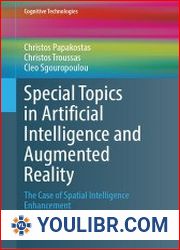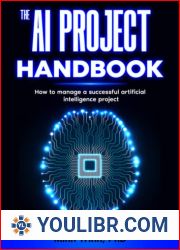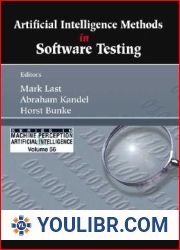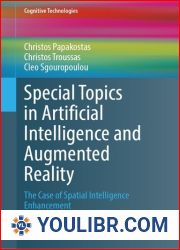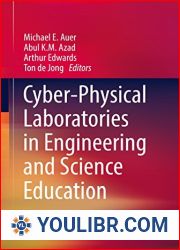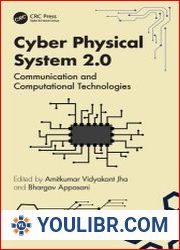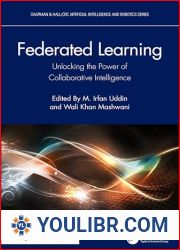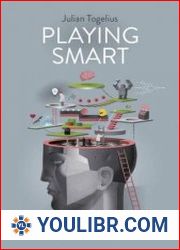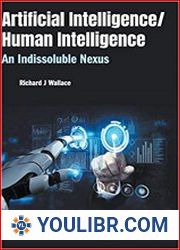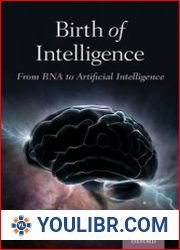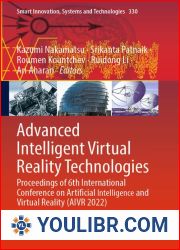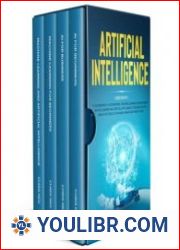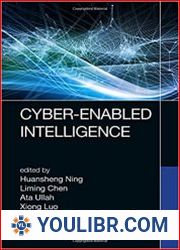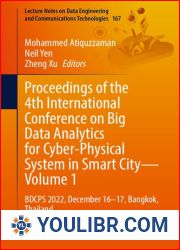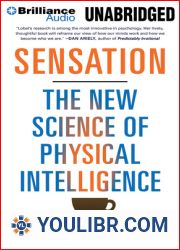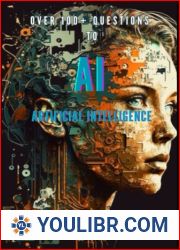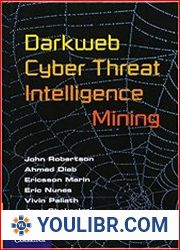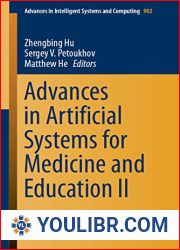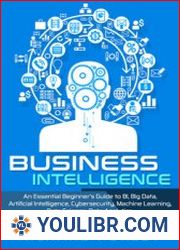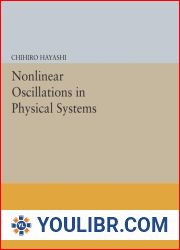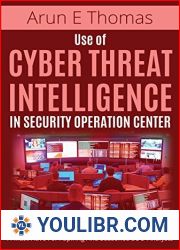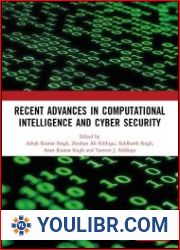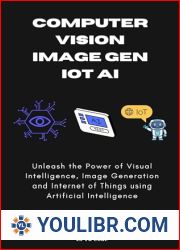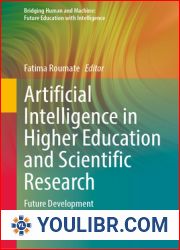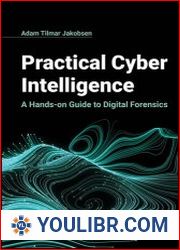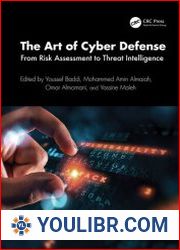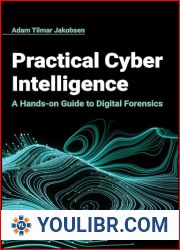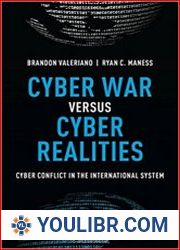
BOOKS - Artificial Intelligence Solutions for Cyber-Physical Systems

Artificial Intelligence Solutions for Cyber-Physical Systems
Author: Pushan Kumar Dutta, Pethuru Raj, B. Sundaravadivazhagan, Chithirai Pon Selvan
Year: 2025
Format: PDF
File size: 10.1 MB
Language: ENG

Year: 2025
Format: PDF
File size: 10.1 MB
Language: ENG

Artificial Intelligence Solutions for Cyber-Physical Systems: A Paradigm Shift for Human Survival The rapid evolution of technology has transformed the industrial sector with the integration of advanced technologies such as the Internet of Things (IoT), Artificial Intelligence (AI), and robotics, revolutionizing smart manufacturing environments. These innovations have brought about higher levels of efficiency, productivity, and safety, but they also introduce new security challenges that must be addressed to ensure the safety of human workers and the integrity of manufacturing processes. As the complexity and interconnectedness of these systems continue to grow, it is essential to adopt a multilayered approach to security, encompassing physical, network, and application layers. This approach can provide real-time monitoring and analysis of system vulnerabilities, as well as the development of adaptive security measures. Cyber-Physical Systems (CPS) are becoming increasingly prevalent in various applications, including transportation, healthcare, and manufacturing. CPS tightly integrates physical components with computational and networking elements, creating a complex web of interconnected systems. Artificial Intelligence (AI) has the potential to significantly improve the performance and capabilities of CPS, particularly with the use of Deep Learning and neural networks.
Решения искусственного интеллекта для кибер-физических систем: смена парадигмы для выживания человека Быстрая эволюция технологий преобразила промышленный сектор с интеграцией передовых технологий, таких как Интернет вещей (IoT), искусственный интеллект (AI) и робототехника, революционизировав интеллектуальные производственные среды. Эти инновации привели к более высоким уровням эффективности, производительности и безопасности, но они также создают новые проблемы безопасности, которые необходимо решать для обеспечения безопасности работников и целостности производственных процессов. Поскольку сложность и взаимосвязанность этих систем продолжают расти, важно принять многоуровневый подход к безопасности, охватывающий физические, сетевые и прикладные уровни. Такой подход может обеспечить мониторинг и анализ уязвимостей системы в режиме реального времени, а также разработку адаптивных мер безопасности. Киберфизические системы (CPS) становятся все более распространенными в различных приложениях, включая транспорт, здравоохранение и производство. CPS плотно интегрирует физические компоненты с вычислительными и сетевыми элементами, создавая сложную паутину взаимосвязанных систем. Искусственный интеллект (ИИ) может значительно улучшить производительность и возможности CPS, особенно с использованием Deep arning и нейронных сетей.
Solutions d'intelligence artificielle pour les systèmes cyber-physiques : changement de paradigme pour la survie humaine L'évolution rapide des technologies a transformé le secteur industriel avec l'intégration de technologies de pointe telles que l'Internet des objets (IoT), l'intelligence artificielle (AI) et la robotique, révolutionnant les environnements de production intelligents. Ces innovations ont donné lieu à des niveaux plus élevés d'efficacité, de productivité et de sécurité, mais elles posent aussi de nouveaux problèmes de sécurité qui doivent être résolus pour assurer la sécurité des travailleurs et l'intégrité des processus de production. La complexité et l'interconnectivité de ces systèmes ne cessant de croître, il est important d'adopter une approche de sécurité à plusieurs niveaux couvrant les couches physiques, de réseau et d'application. Cette approche peut permettre la surveillance et l'analyse en temps réel des vulnérabilités du système, ainsi que le développement de mesures de sécurité adaptatives. s systèmes cybernétiques (CPS) sont de plus en plus courants dans diverses applications, y compris les transports, les soins de santé et la production. CPS intègre étroitement les composants physiques aux éléments de calcul et de réseau, créant ainsi un réseau complexe de systèmes interconnectés. L'intelligence artificielle (IA) peut améliorer considérablement les performances et les capacités du CPS, en particulier en utilisant Deep arning et les réseaux neuronaux.
Soluciones de inteligencia artificial para sistemas cibernéticos: un cambio de paradigma para la supervivencia humana La rápida evolución de la tecnología ha transformado el sector industrial con la integración de tecnologías avanzadas como el Internet de las Cosas (IoT), la inteligencia artificial (IA) y la robótica, revolucionando los entornos de producción inteligentes. Estas innovaciones han dado lugar a mayores niveles de eficiencia, productividad y seguridad, pero también plantean nuevos desafíos de seguridad que deben abordarse para garantizar la seguridad de los trabajadores y la integridad de los procesos de producción. A medida que la complejidad y la interconexión de estos sistemas siguen aumentando, es importante adoptar un enfoque de seguridad por niveles que abarque los niveles físico, de red y de aplicación. Este enfoque puede permitir el seguimiento y análisis en tiempo real de las vulnerabilidades del sistema, así como el desarrollo de medidas de seguridad adaptativas. sistemas ciberfísicos (CPS) son cada vez más comunes en una variedad de aplicaciones, incluyendo el transporte, la salud y la producción. CPS integra estrechamente componentes físicos con elementos informáticos y de red, creando una compleja red de sistemas interconectados. La inteligencia artificial (IA) puede mejorar significativamente el rendimiento y las capacidades de CPS, especialmente con el uso de redes neuronales y redes Deep arning.
KI-Lösungen für cyber-physische Systeme: Paradigmenwechsel für das menschliche Überleben Die rasante Entwicklung der Technologie hat den Industriesektor durch die Integration fortschrittlicher Technologien wie dem Internet der Dinge (IoT), künstlicher Intelligenz (KI) und Robotik verändert und intelligente Produktionsumgebungen revolutioniert. Diese Innovationen haben zu einem höheren Maß an Effizienz, Produktivität und cherheit geführt, aber sie stellen auch neue cherheitsherausforderungen dar, die angegangen werden müssen, um die cherheit der Arbeitnehmer und die Integrität der Produktionsprozesse zu gewährleisten. Da die Komplexität und Interkonnektivität dieser Systeme weiter zunimmt, ist es wichtig, einen mehrstufigen cherheitsansatz zu verfolgen, der physische, Netzwerk- und Anwendungsschichten umfasst. Dieser Ansatz kann die Überwachung und Analyse von Systemschwachstellen in Echtzeit sowie die Entwicklung adaptiver cherheitsmaßnahmen ermöglichen. Cyber-physische Systeme (CPS) werden in einer Vielzahl von Anwendungen, einschließlich Transport, Gesundheitswesen und Produktion, immer häufiger. CPS integriert physische Komponenten eng mit Computer- und Netzwerkelementen und schafft ein komplexes Netz miteinander verbundener Systeme. Künstliche Intelligenz (KI) kann die istung und Fähigkeiten von CPS erheblich verbessern, insbesondere durch den Einsatz von Deep arning und neuronalen Netzen.
''
ber-Fiziksel stemler için Yapay Zeka Çözümleri: İnsanın Hayatta Kalması için Paradigma Değişimi Teknolojinin hızlı evrimi, akıllı üretim ortamlarında devrim yaratan Nesnelerin İnterneti (IoT), yapay zeka (AI) ve robotik gibi ileri teknolojilerin entegrasyonu ile sanayi sektörünü dönüştürdü. Bu yenilikler daha yüksek verimlilik, üretkenlik ve güvenlik seviyeleri ile sonuçlanmıştır, ancak aynı zamanda işçi güvenliğini ve üretim süreçlerinin bütünlüğünü sağlamak için ele alınması gereken yeni güvenlik zorlukları da yaratmaktadır. Bu sistemlerin karmaşıklığı ve birbirine bağlılığı artmaya devam ettikçe, fiziksel, ağ ve uygulama katmanlarını kapsayan güvenlik için katmanlı bir yaklaşım benimsemek önemlidir. Bu yaklaşım, sistem güvenlik açıklarının gerçek zamanlı izlenmesi ve analizinin yanı sıra uyarlanabilir güvenlik önlemlerinin geliştirilmesini sağlayabilir. ber-fiziksel sistemler (CPS), ulaşım, sağlık ve üretim dahil olmak üzere çeşitli uygulamalarda giderek yaygınlaşmaktadır. CPS, fiziksel bileşenleri bilgisayar ve ağ elemanlarıyla sıkı bir şekilde bütünleştirir ve birbirine bağlı sistemlerden oluşan karmaşık bir ağ oluşturur. Yapay zeka (AI), özellikle Derin arklama ve sinir ağlarını kullanarak CPS performansını ve yeteneklerini önemli ölçüde artırabilir.
حلول الذكاء الاصطناعي للأنظمة السيبرانية الفيزيائية: تحول نموذجي لبقاء الإنسان أدى التطور السريع للتكنولوجيا إلى تحويل القطاع الصناعي من خلال تكامل التقنيات المتقدمة مثل إنترنت الأشياء (IoT) والذكاء الاصطناعي (AI) والروبوتات، مما أحدث ثورة في التصنيع الذكي البيئات. أدت هذه الابتكارات إلى مستويات أعلى من الكفاءة والإنتاجية والسلامة، لكنها خلقت أيضًا تحديات أمان جديدة يجب معالجتها لضمان سلامة العمال وسلامة عمليات الإنتاج. مع استمرار تعقيد وترابط هذه الأنظمة في النمو، من المهم اعتماد نهج متعدد الطبقات للأمان يمتد عبر الطبقات المادية والشبكية والتطبيقات. ويمكن لهذا النهج أن يوفر الرصد والتحليل الآنيين لمواطن الضعف في النظام، فضلا عن وضع تدابير أمنية قابلة للتكيف. أصبحت الأنظمة الفيزيائية الإلكترونية (CPS) شائعة بشكل متزايد في مجموعة متنوعة من التطبيقات، بما في ذلك النقل والرعاية الصحية والتصنيع. تدمج CPS المكونات الفيزيائية بإحكام مع عناصر الحوسبة والشبكة، مما يخلق شبكة معقدة من الأنظمة المترابطة. يمكن للذكاء الاصطناعي (AI) تحسين أداء وقدرات CPS بشكل كبير، خاصة باستخدام التعلم العميق والشبكات العصبية.







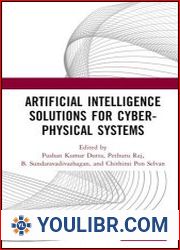
 49
49  1 TON
1 TON

